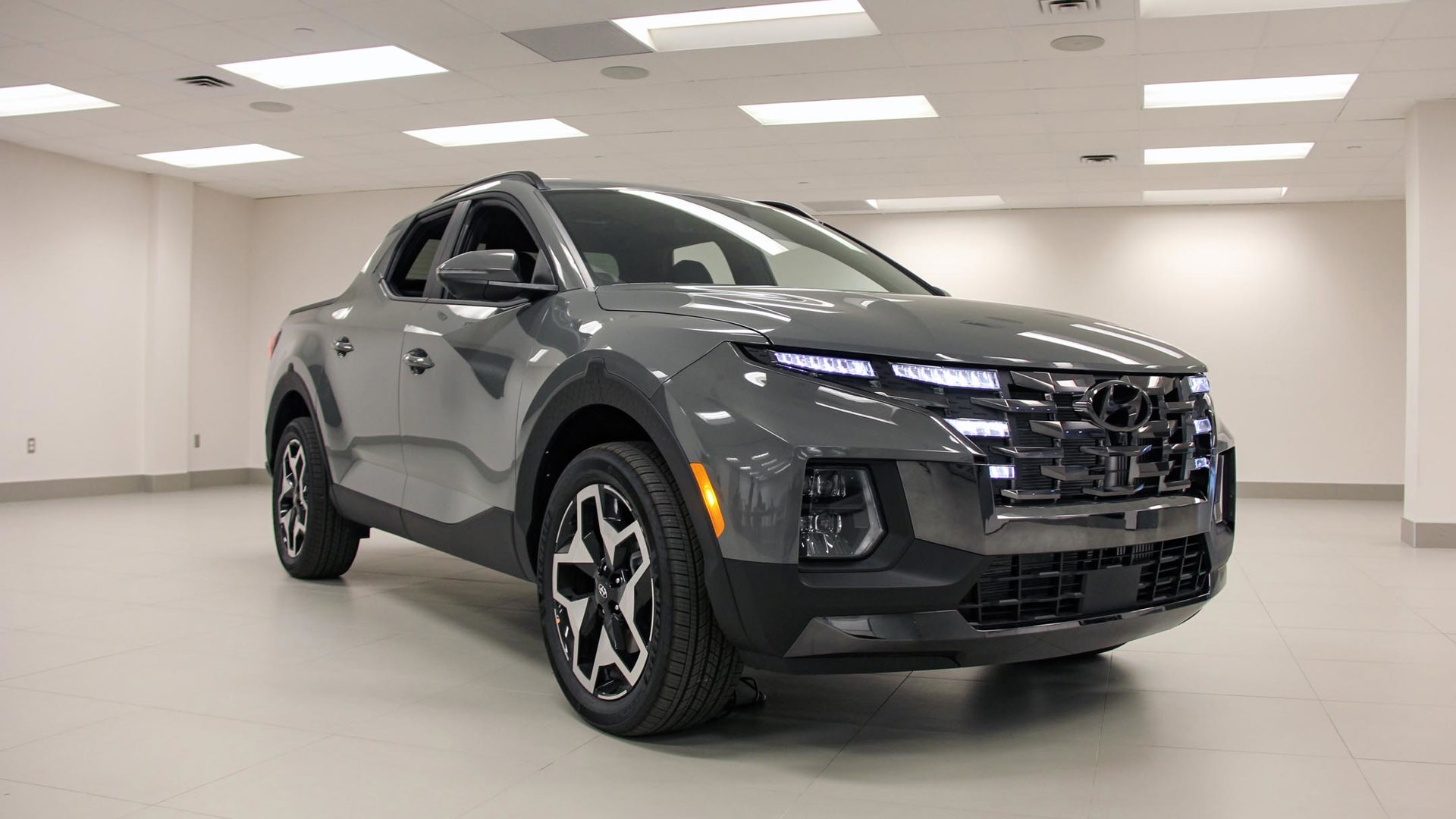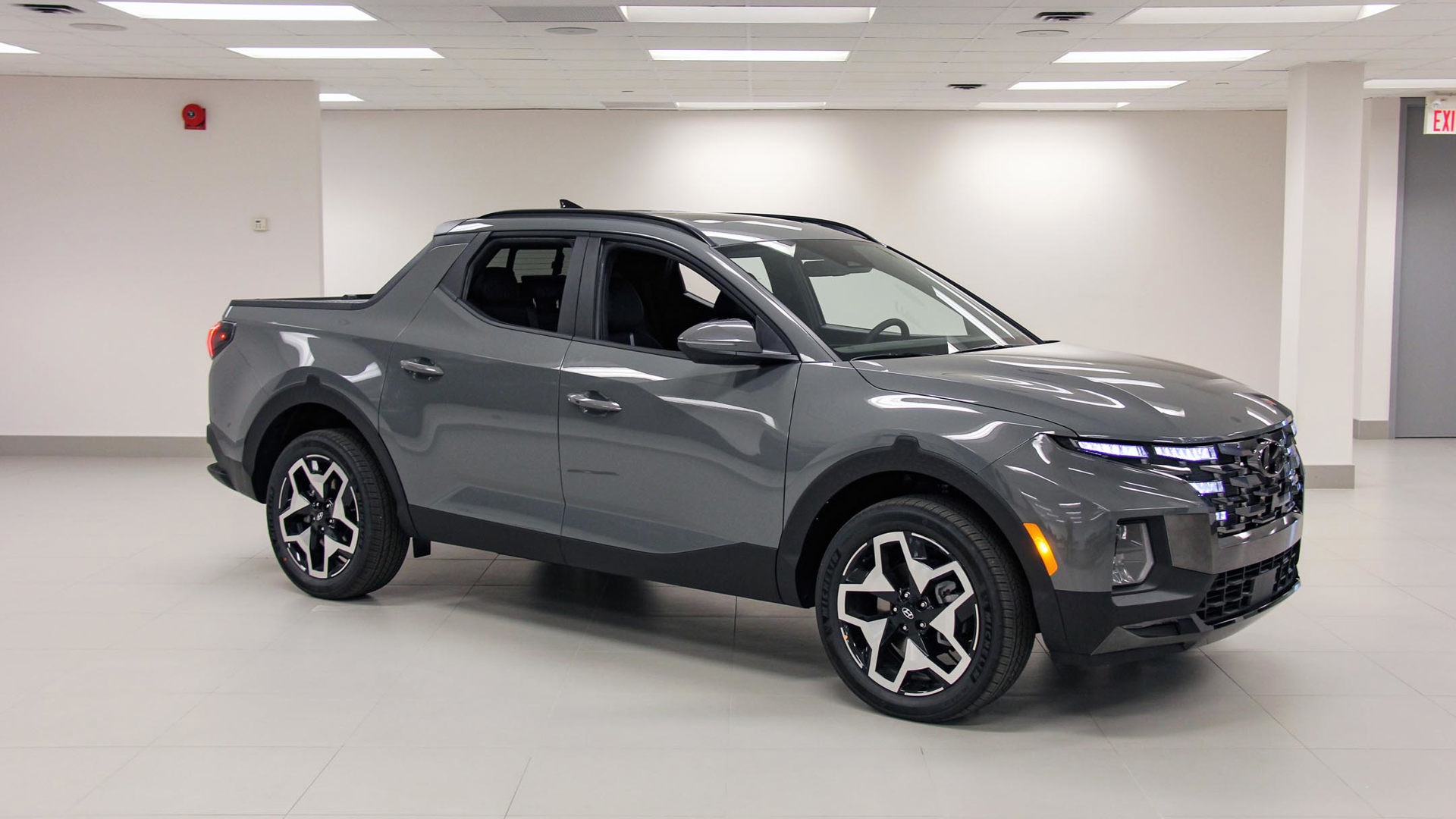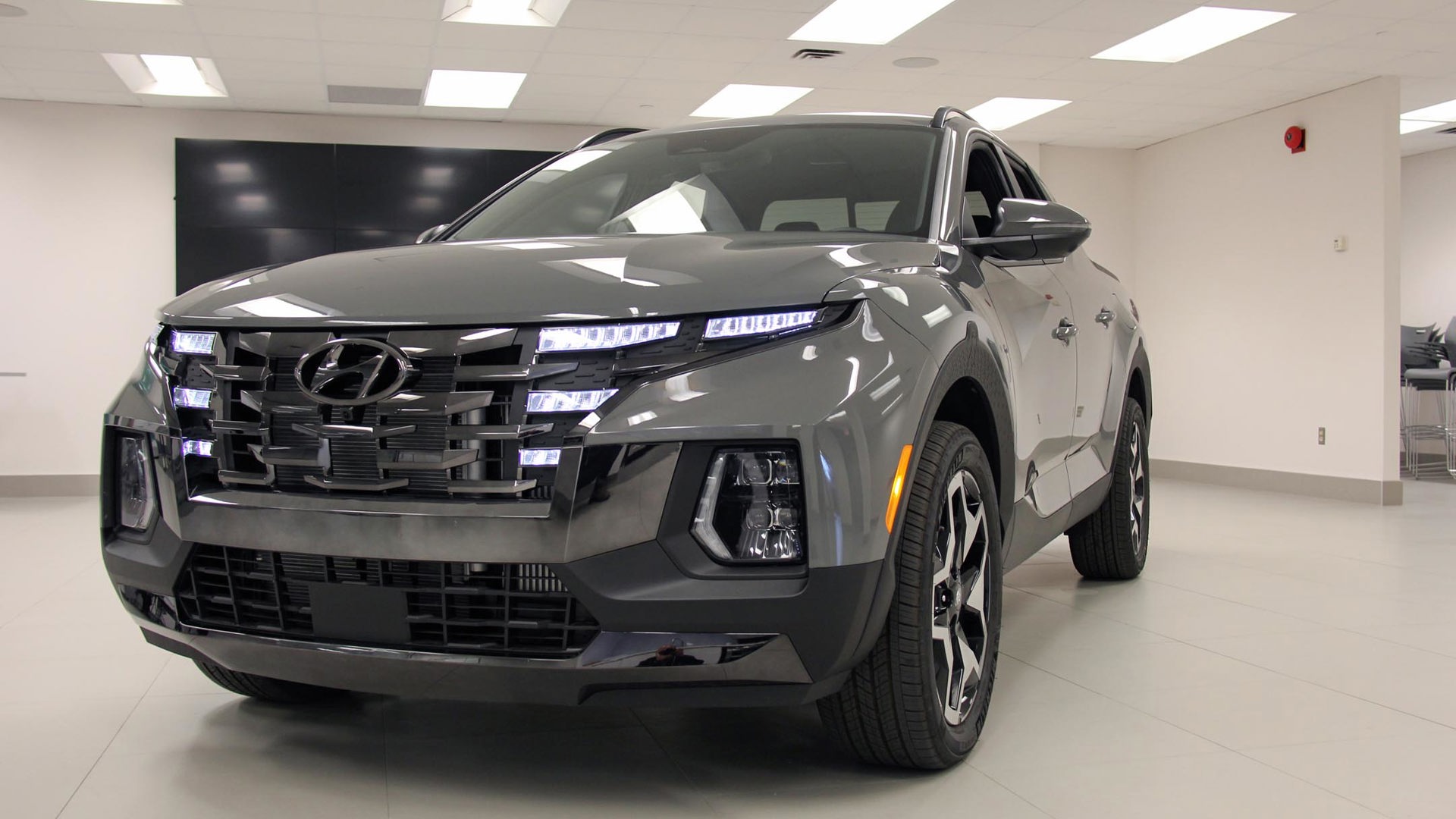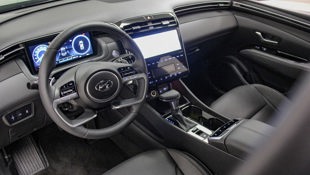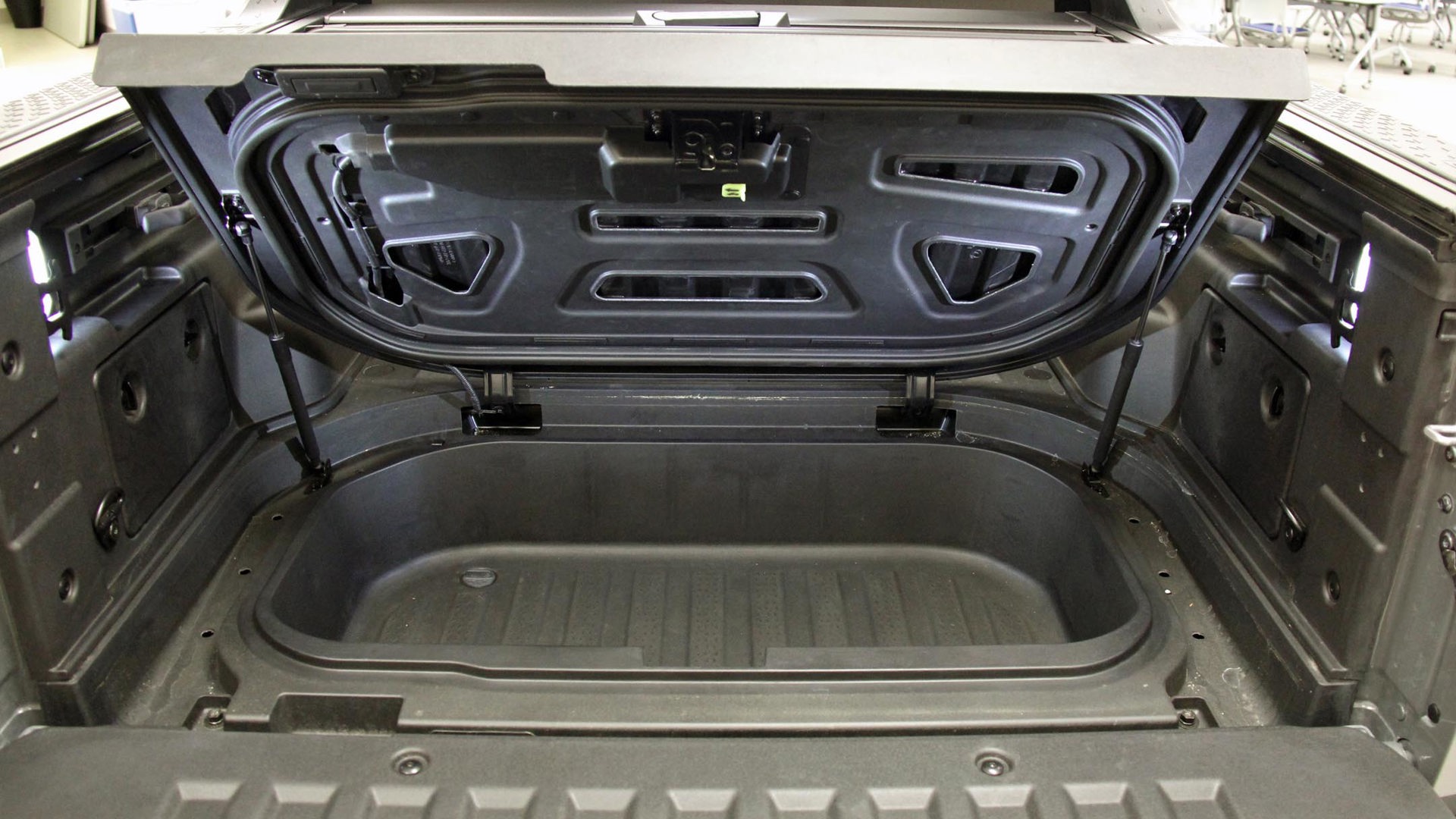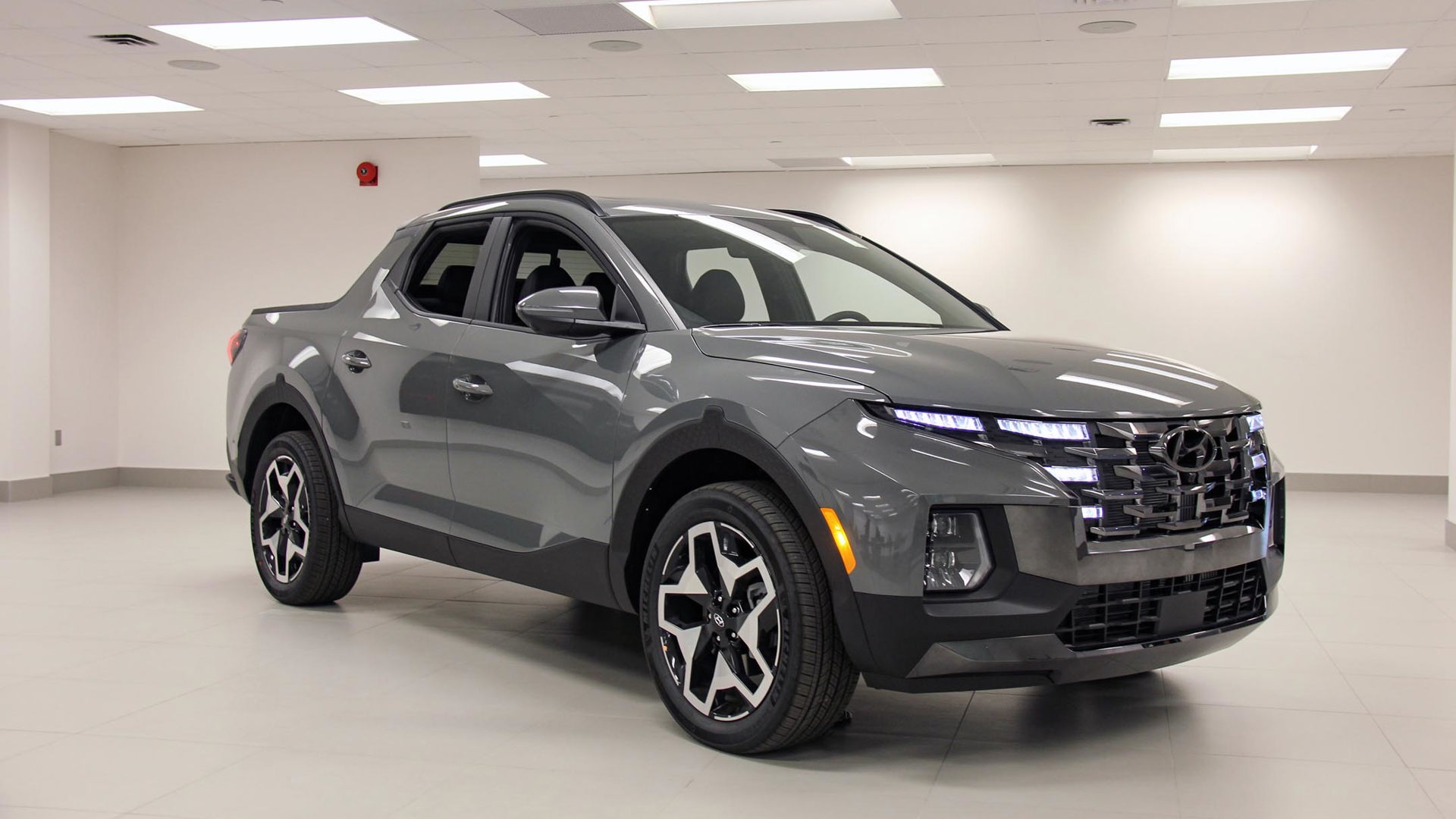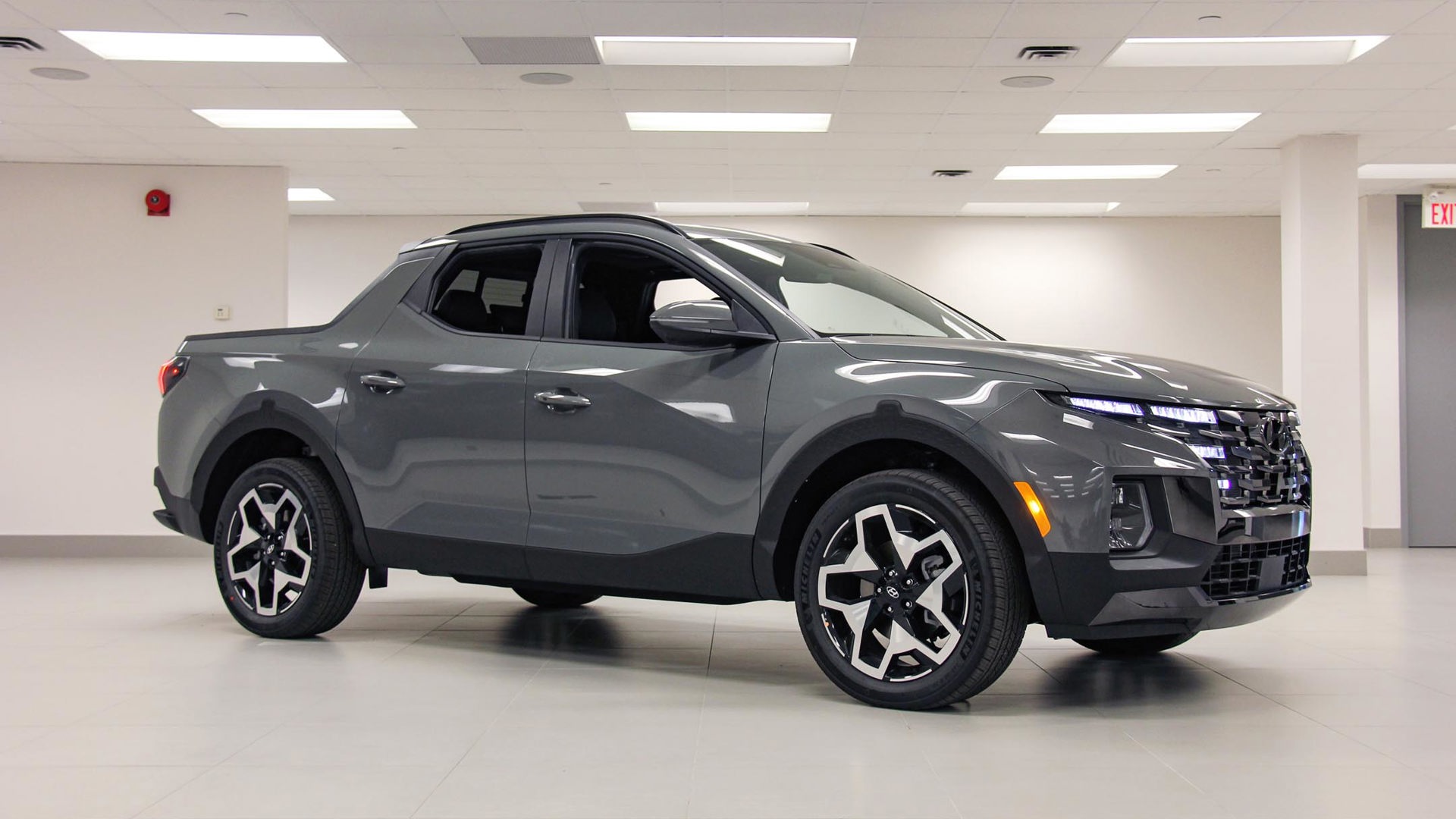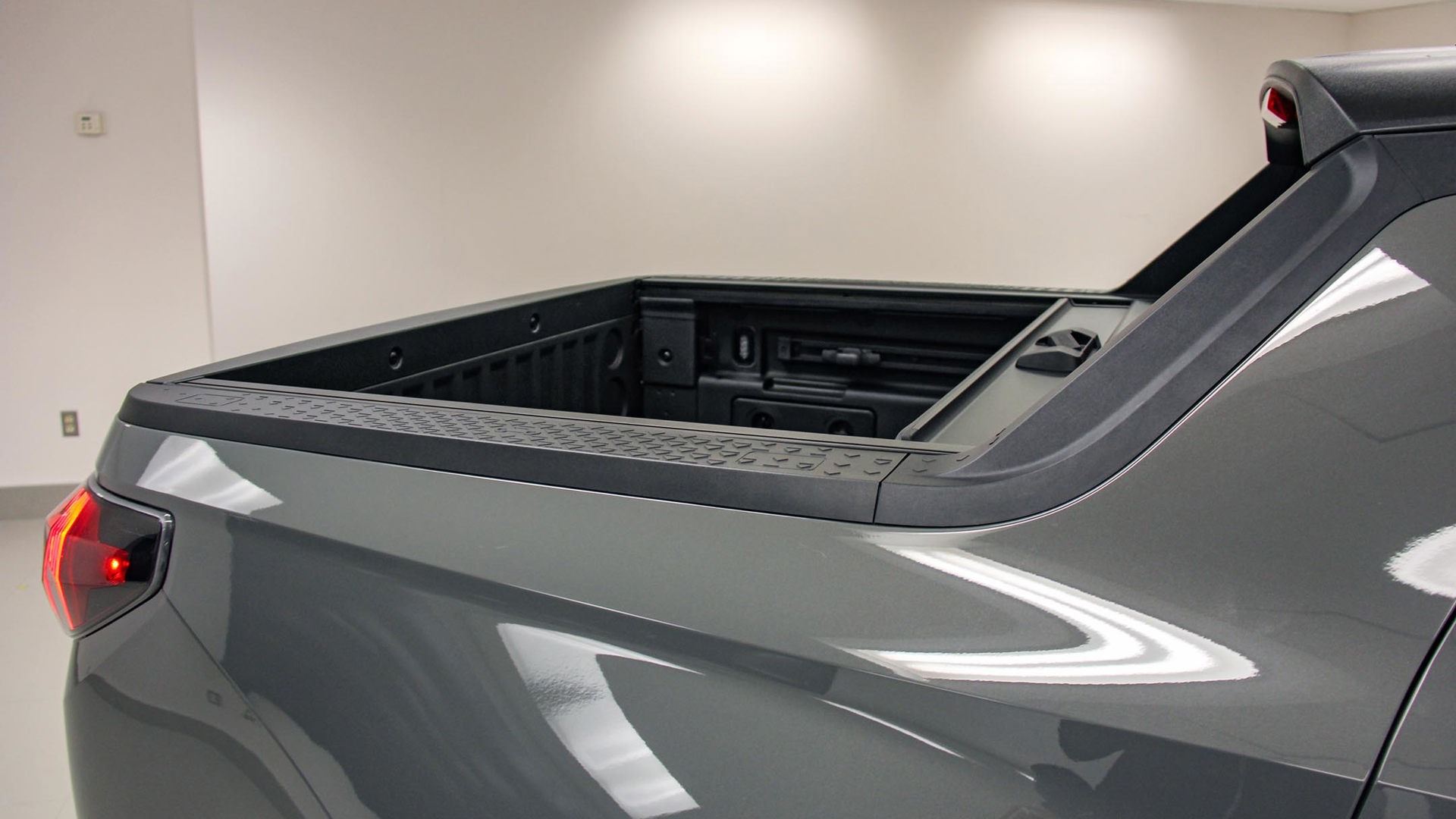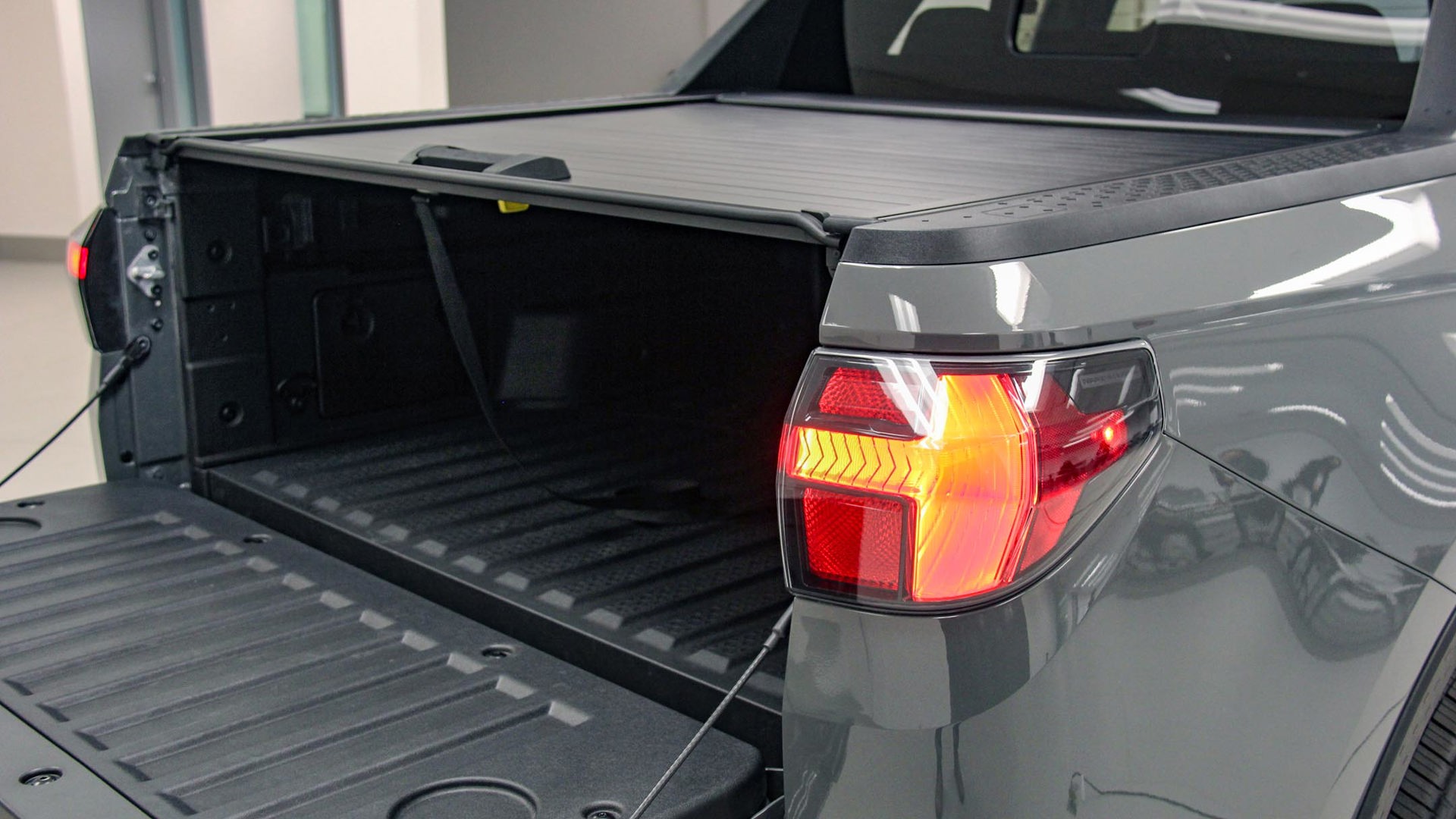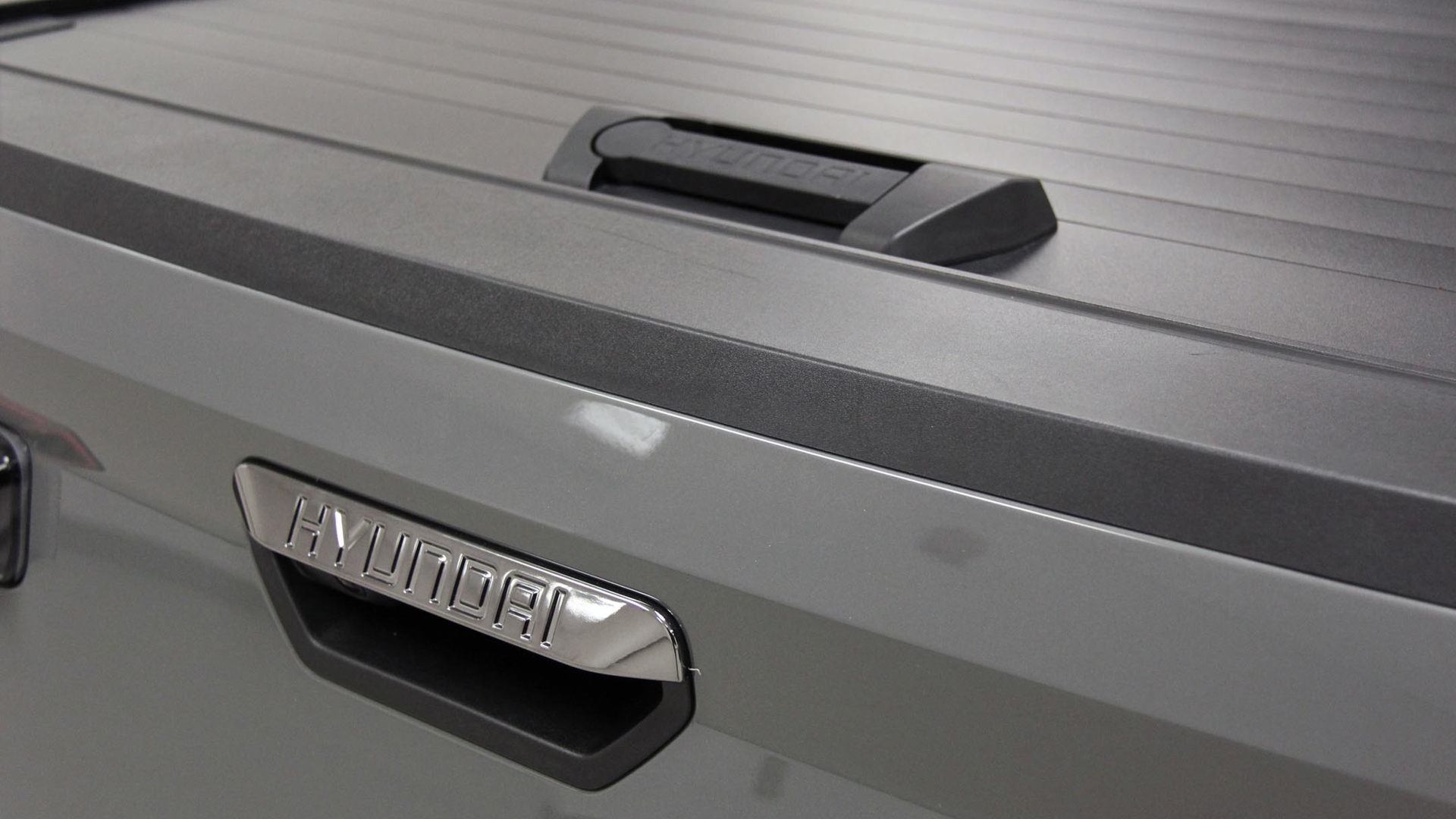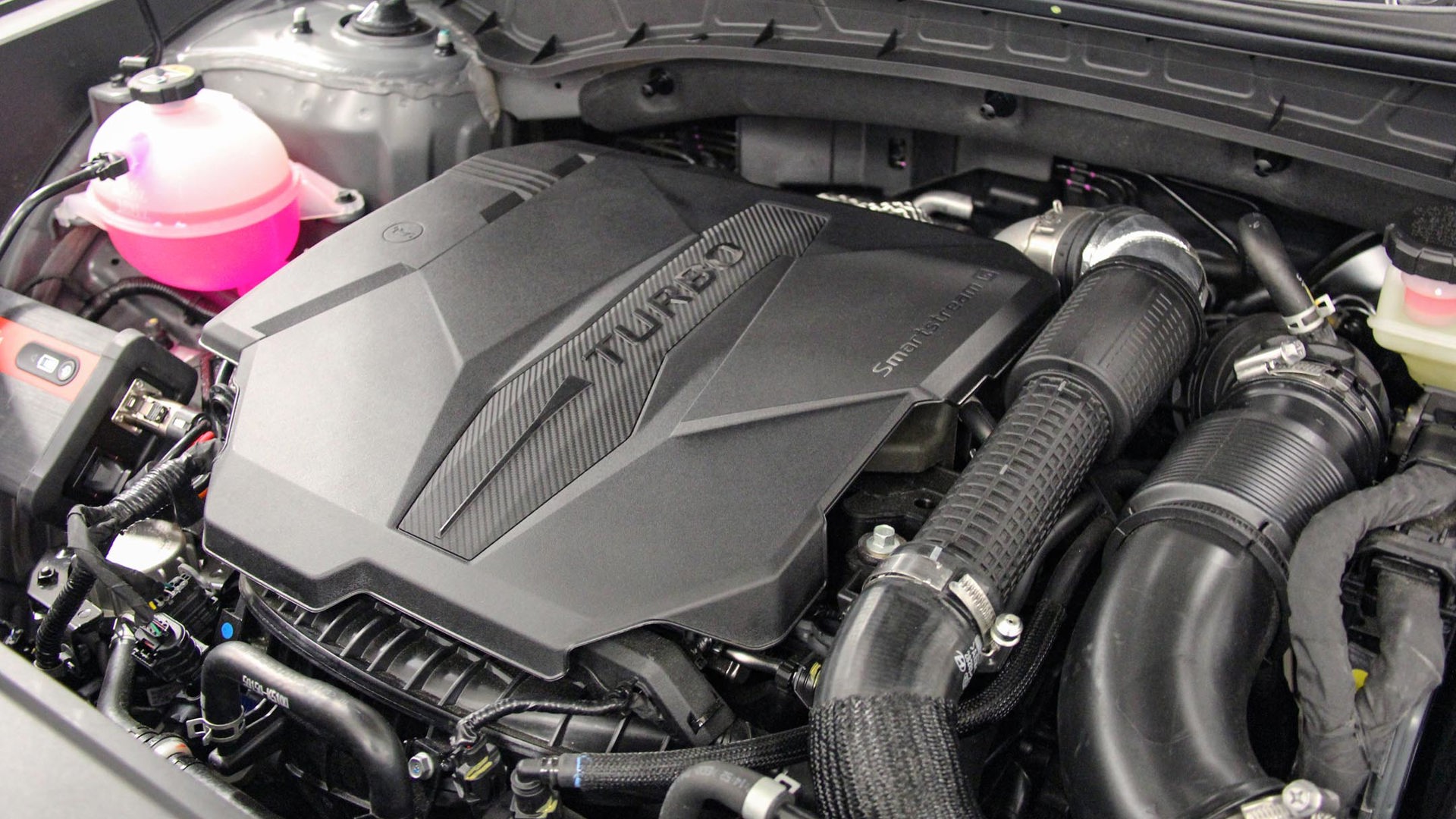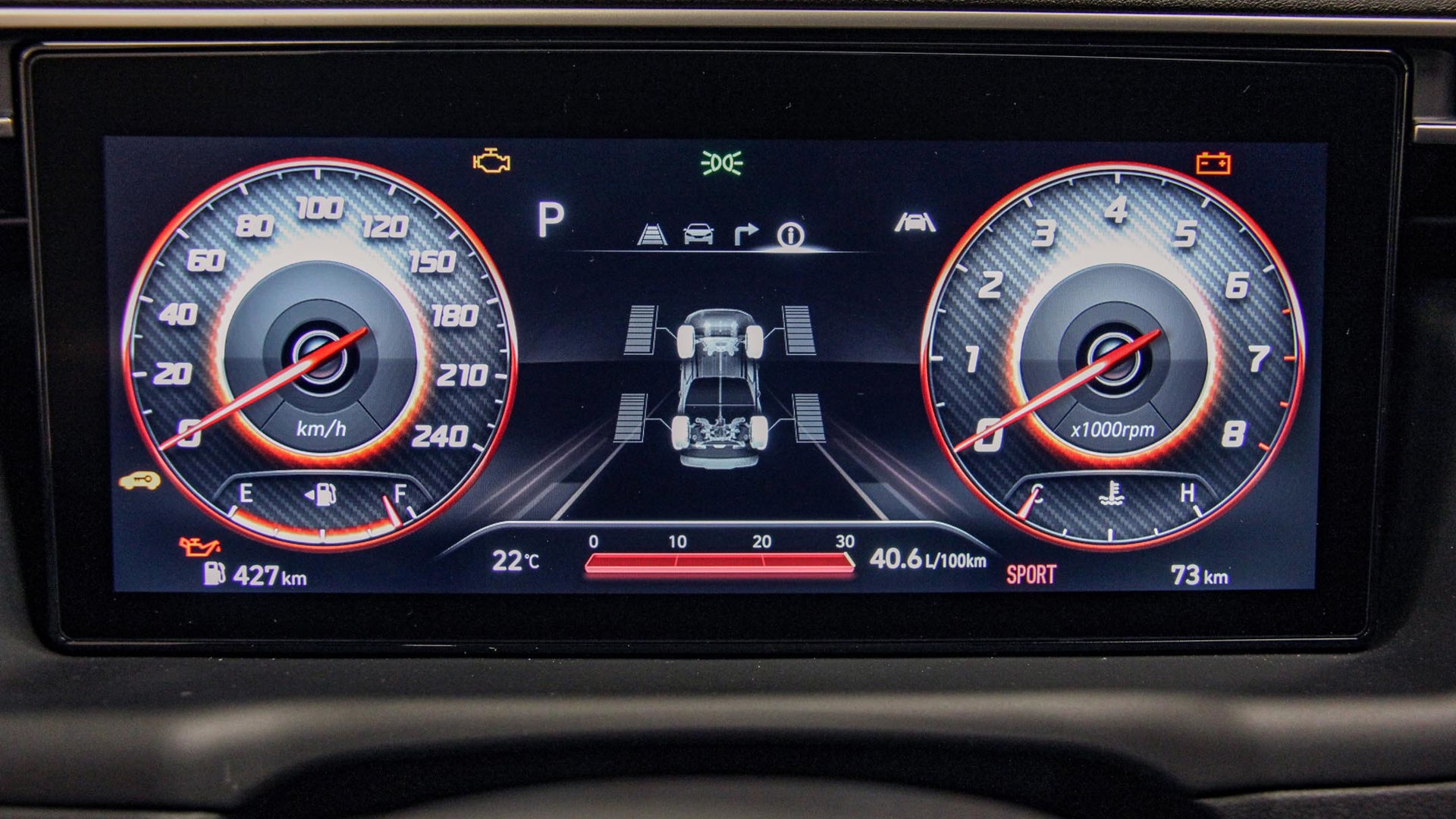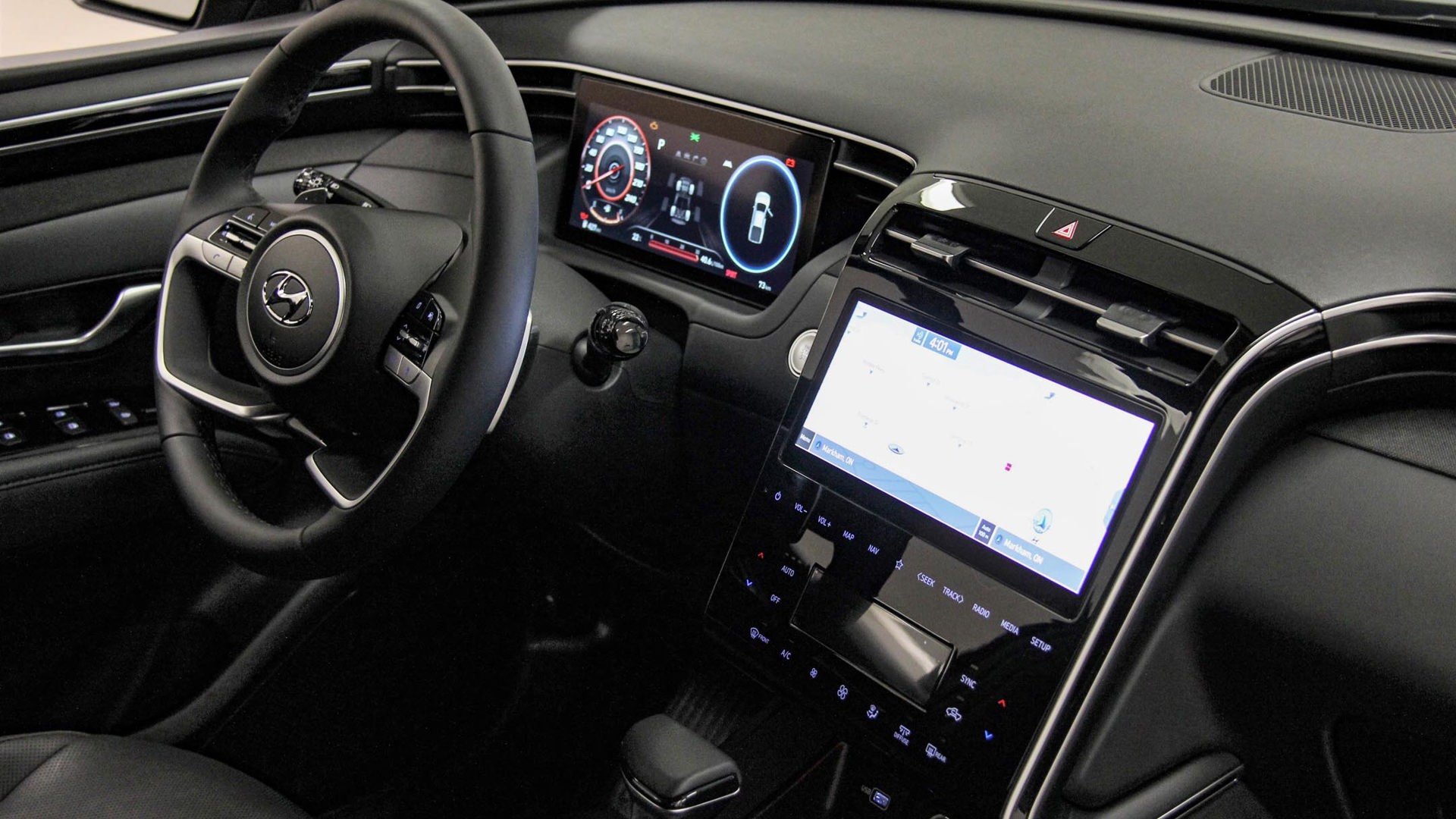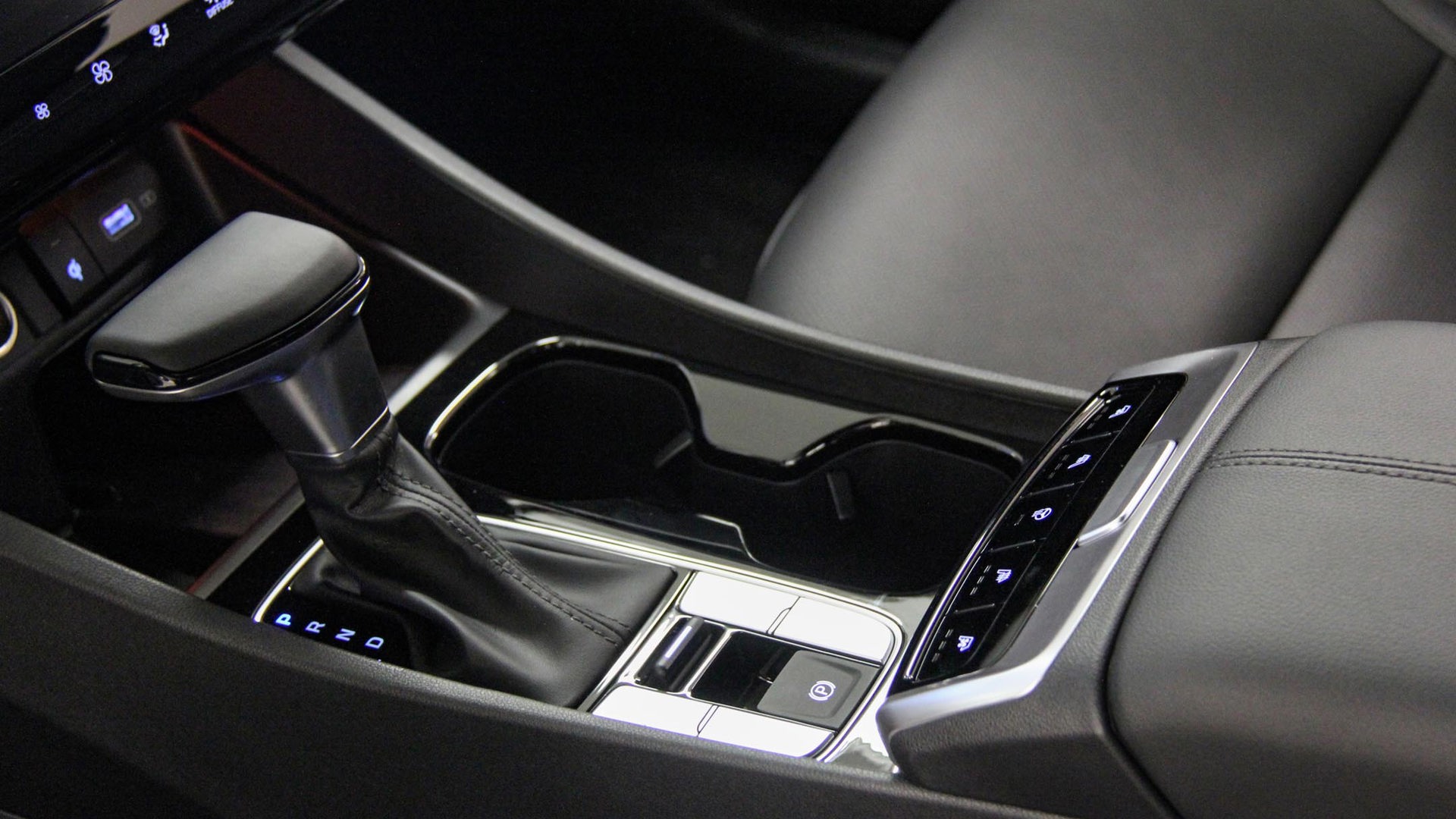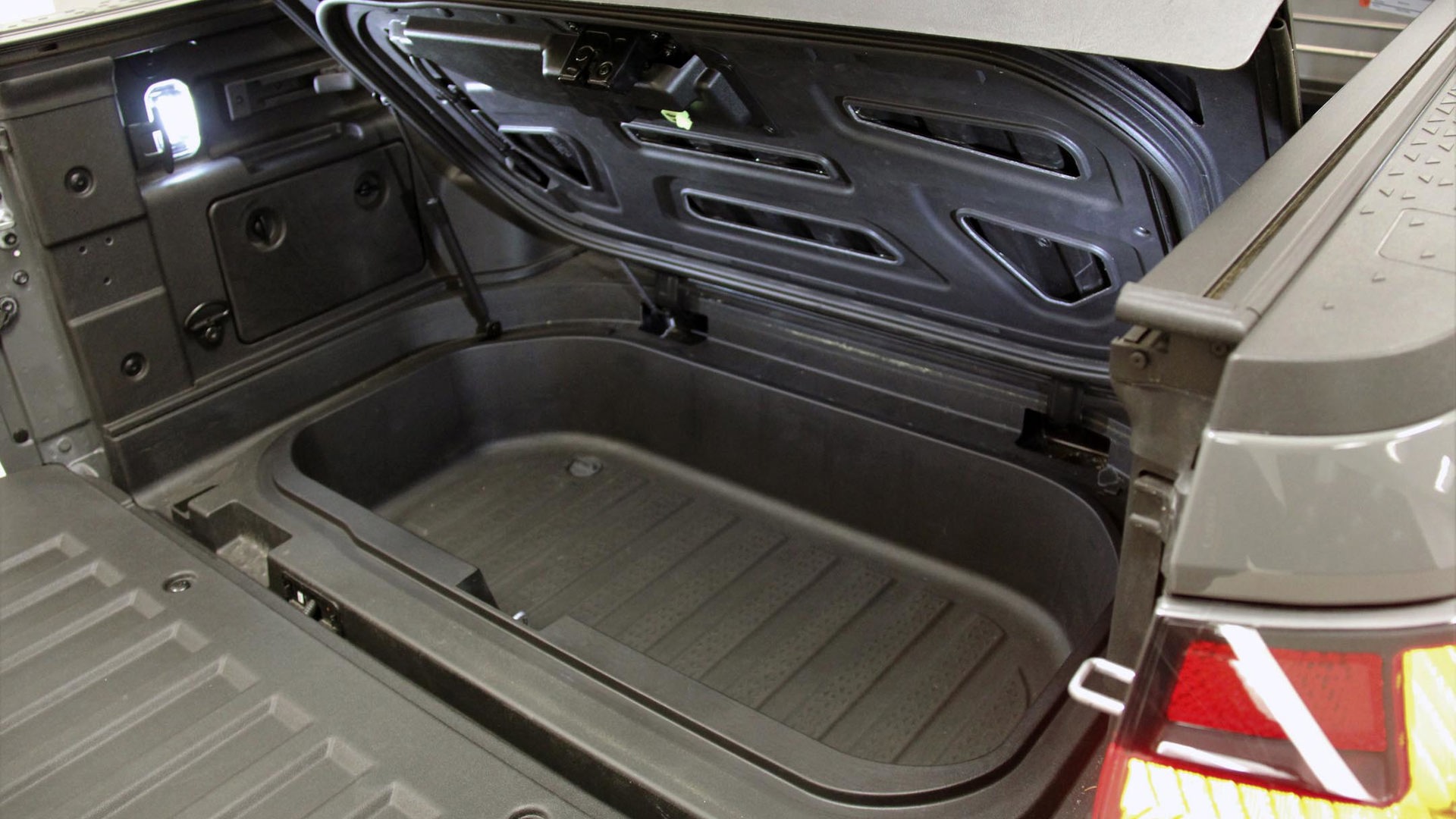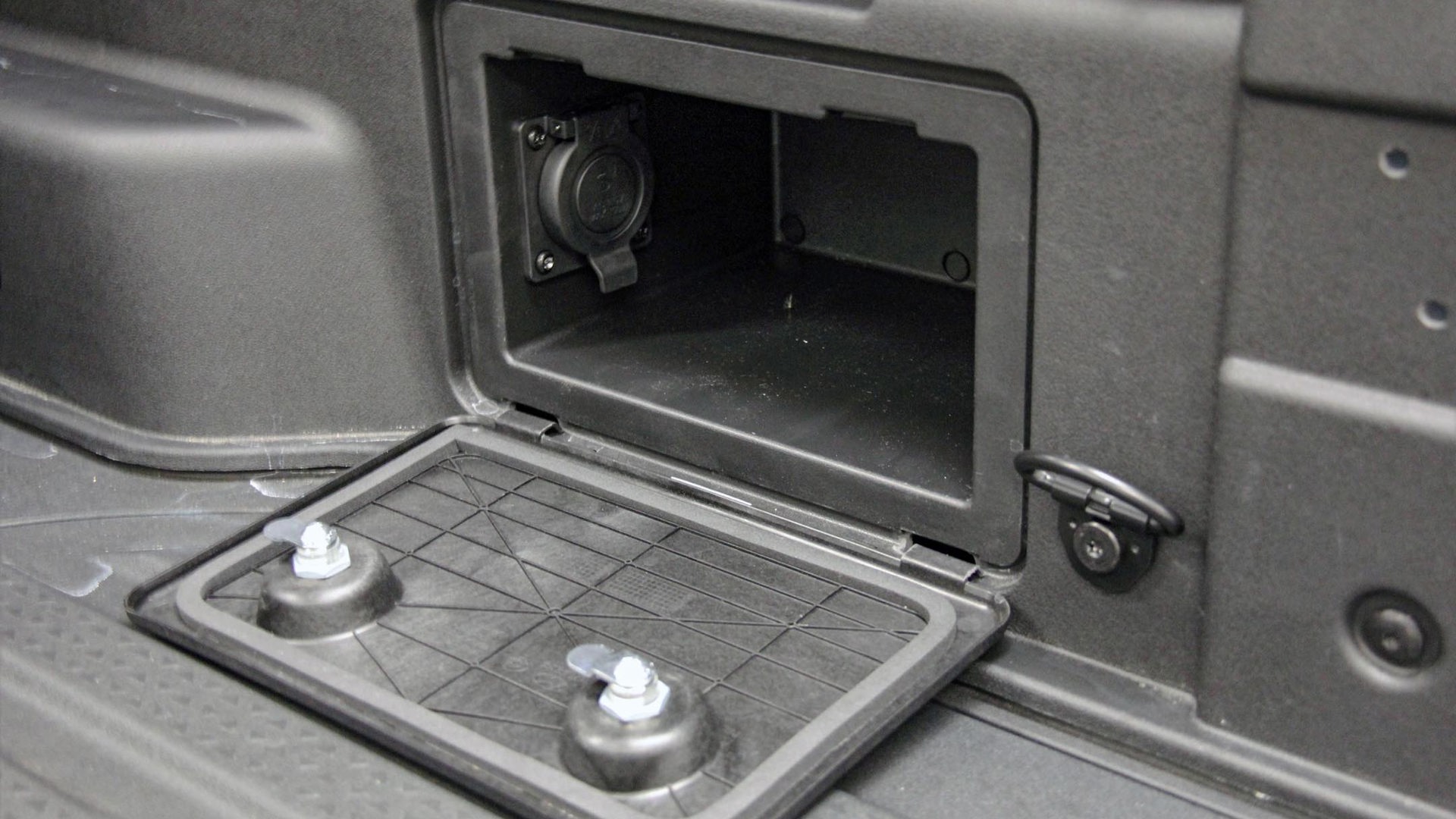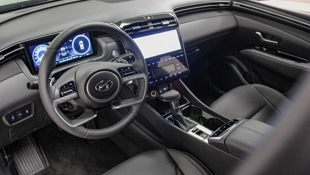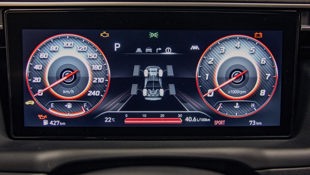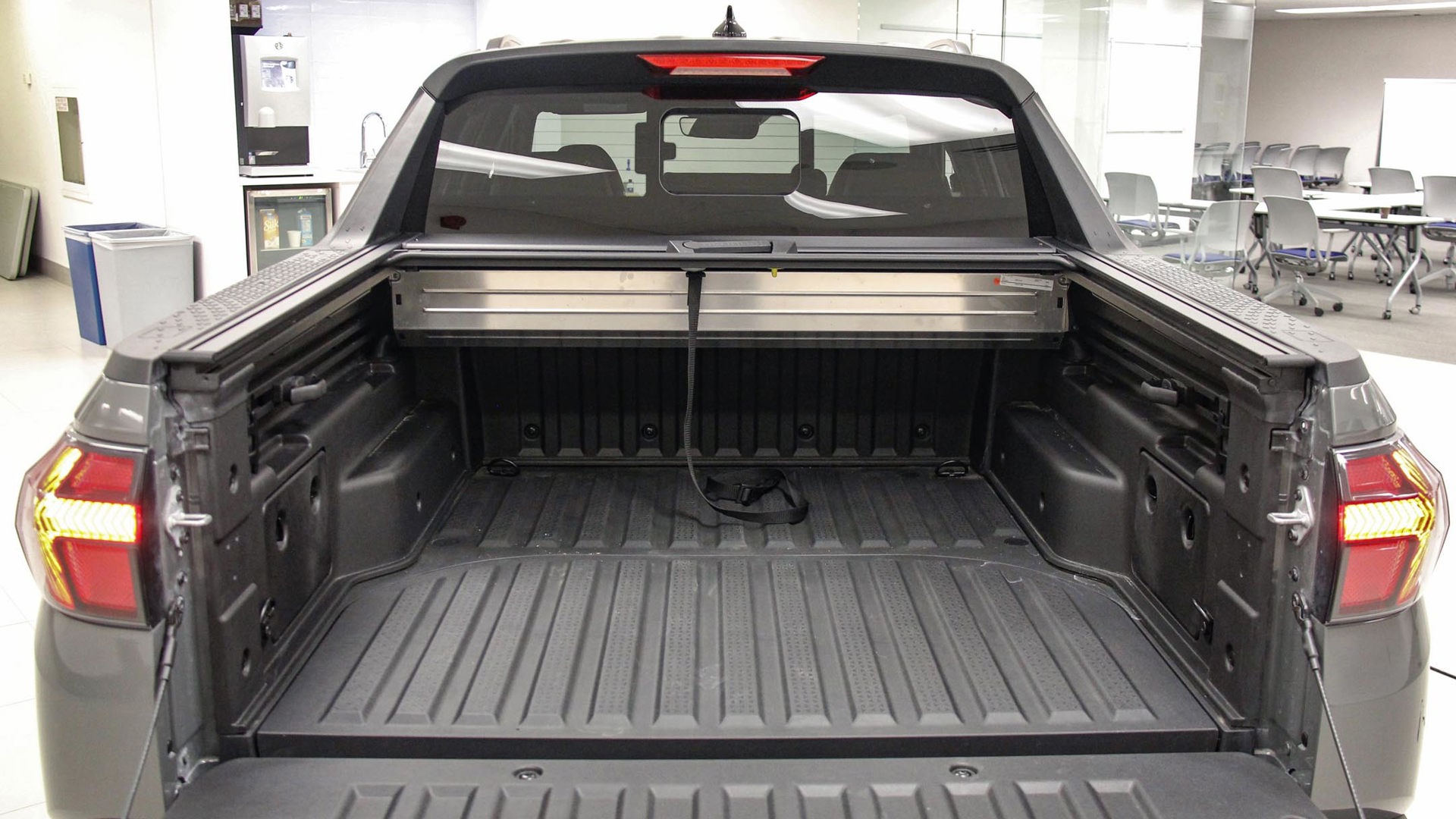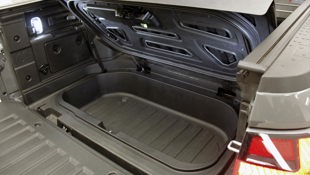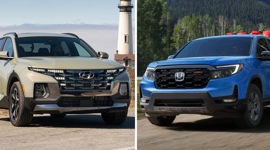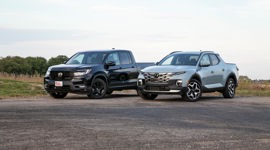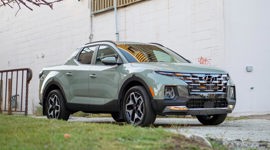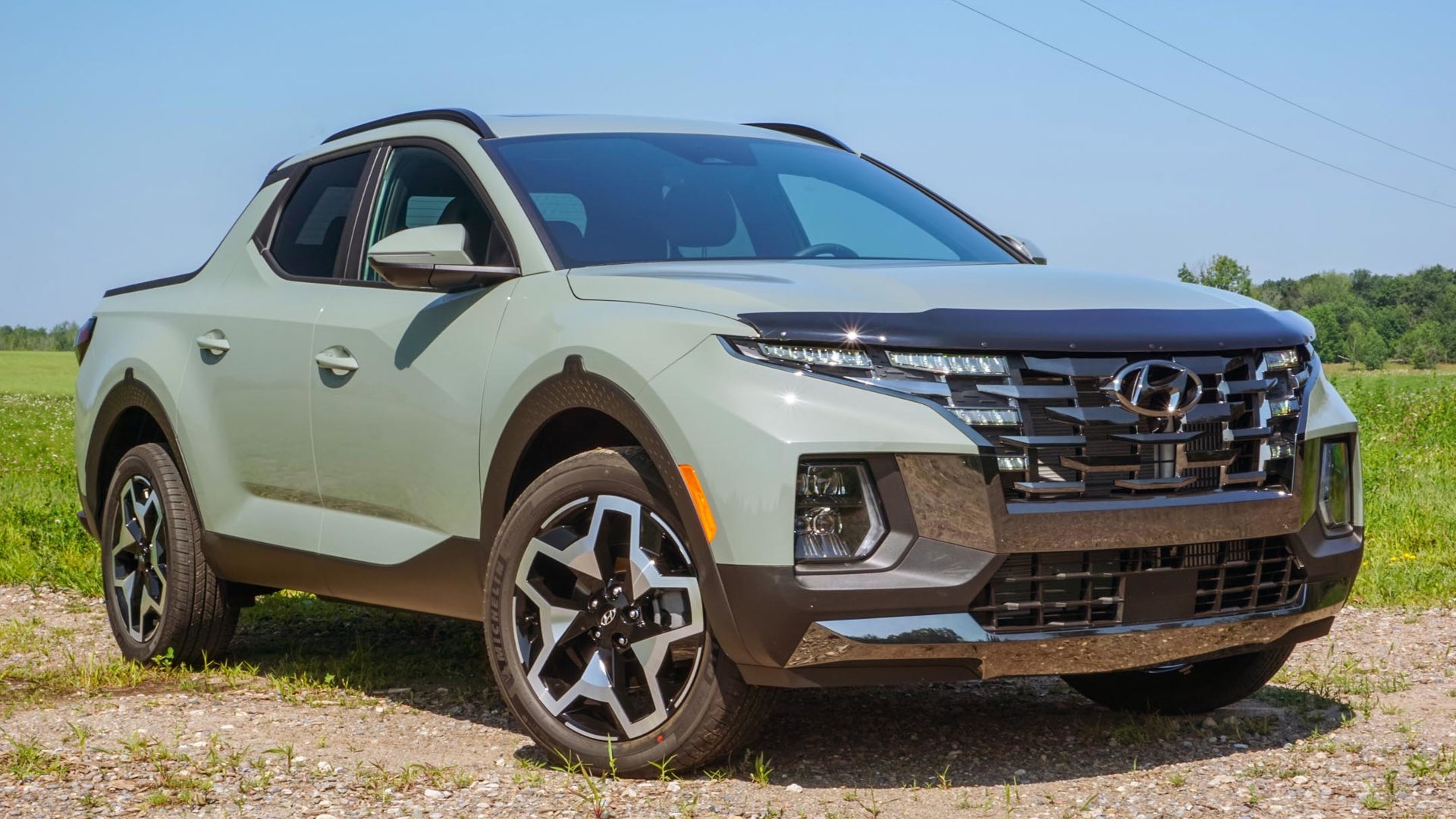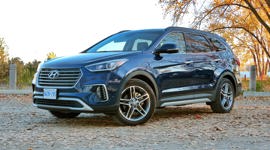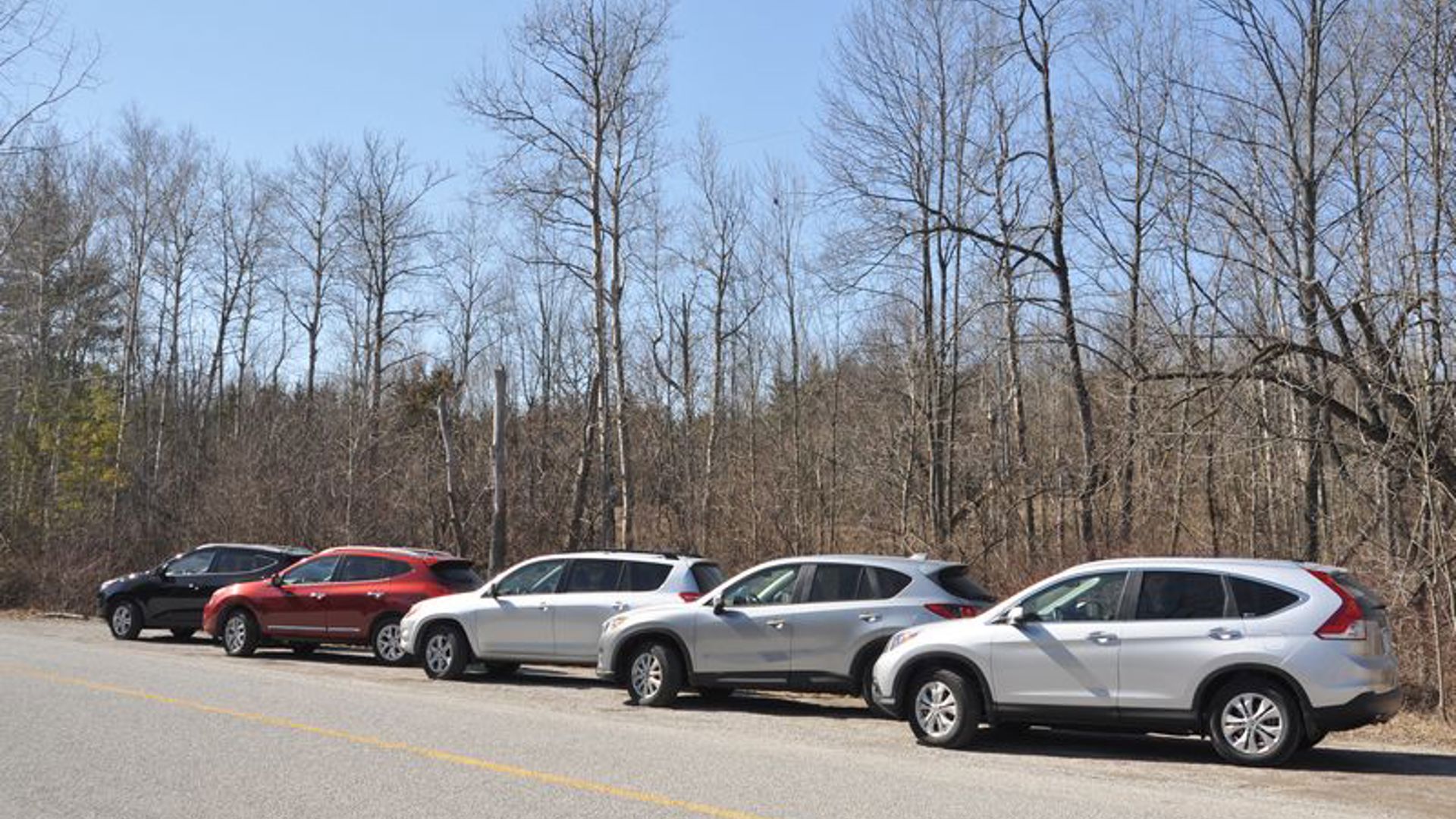Being touted as a “sport adventure vehicle” rather than a pickup, the unibody 2022 Hyundai Santa Cruz is slated to start production this summer at the company’s Montgomery, Ala., plant. Previously only seeing the vehicle online, we were invited to see a pre-production model up close and personal at Hyundai Canada HQ while receiving a walkaround from Steve Flamand, Executive Director of Product & Corporate Strategy at Hyundai Auto Canada Corp.
The Santa Cruz makes use of the company’s latest design language and a great deal of attention has been paid to the lighting, which provides a striking signature both at the front and integrated into the bed on the rear. The appearance is rugged, with wheel-well and rocker moldings. The wheels have been pushed out to the corners for a stable and planted look and feel. “With an execution like this, you want the theme to have longevity,” explained Flamand, “I think the designers did a really good job to balance the aggressiveness and sportiness of the vehicle with something that’s going to have legs in the market.” There are lots of little Easter eggs incorporated into its design.
Two trims will be made available – Preferred and Ultimate. 18-inch wheels come standard on Preferred, but 20-inch wheels are optional. The 20s are standard on Ultimate trim. Pricing and packaging details will be announced closer to the launch.
In terms of the interior, many aspects are shared with the new Tucson, which is good news. Soft-touch materials with a high feeling of quality were used to provide an upscale vibe. There is seating for five. The rear bench flips up to reveal additional storage compartments.
A great deal of attention has been paid to the integration of technology and how we interact with it. Flamand went so far as to say, “You can almost think of Hyundai as a technology company that happens to be making cars.”
An eight-inch infotainment display with wireless Apple CarPlay and Android Auto comes standard, but a 10.25-inch widescreen infotainment display is also available. All vehicles will get the Bluelink telematics system. The smartphone app lets you remotely lock and unlock your vehicle, monitor its location, check diagnostics, and even adjust climate controls.
An eight-speed wet dual-clutch transmission was chosen to assist with heat management, acceleration, and fuel economy. The all-wheel drive system features torque vectoring, offering the capability of managing torque side to side and front to back for better traction and handling.
Exclusive to Canada is a mud, snow, and sand mode that modulates pedal sensitivity and throttle mapping while also engaging the AWD system to find the best traction for the conditions. Each setting has unique characteristics, as does the hill descent assist feature. A drive mode selector allows the driver to select eco or sport to prioritize fuel economy or driving enjoyment. Engineers incorporated the same logic used on the sportier “N” line of vehicles into the software mapping of the sport mode. When changing drive modes, the digital dash changes colour to suit that mode. Under normal driving conditions, power is biased towards the front to prioritize fuel economy, however, engaging the sport mode sends more power to the rear.
The showcase of the vehicle, the 1,218-mm (4-ft) bed contains a lockable sliding tonneau cover as standard, along with a variety of lockable storage areas, one of which has a 110V charging port. One even features a drain plug in the bottom so it can be filled with ice to keep food or drinks cold. The bed also features lots of thoughtful elements like integrated hooks and a sidestep to easily access the bed. The area isn’t as large as a traditional pickup, of course, but can accommodate a 4x8 piece of plywood (with the tailgate down or partially raised).
Boasting a total payload of 726 kg (1,600 lb), the bed itself can accommodate 299 kg (660 lb). That’s enough to transport a couple of dirt bikes or a small ATV. “The accessory team is having a field day,” Flamand said. A variety of applications will be available for lifestyle activities from bike racks to a tent system.
A non-turbocharged engine will be available in the U.S., but the exclusive engine offering in Canada will be a turbocharged 2.5-litre four-cylinder producing 281 horsepower and 311 pound-feet of torque.
Capable of towing up to 2,267 kg (5,000 lb), it doesn’t feature a specific towing mode but will recognize a load to adjust throttle mapping and gear selection accordingly.
Rather than being suited to those who flock to increasingly monstrous pickups, the Santa Cruz should be seen as a nimble little all-wheel drive SUV with an open back that will accommodate sporting equipment, or items that are wet, sandy, or muddy that you wouldn’t want inside your vehicle.
The ill-fated Subaru Baja followed a similar mantra. It, unfortunately, failed to meet sales expectations and was discontinued; however, the niche model has subsequently amassed a cult-like following that has propped up its value over time.
The Santa Cruz is certainly not for everyone, but Hyundai believes that there is a large enough subsection of active urban dwellers who will be attracted to its agility, fuel economy, power, and utility. Given the recent announcement of the Ford Maverick, it seems that the company is not alone in thinking that. Perhaps the Baja was a vehicle ahead of its time.
